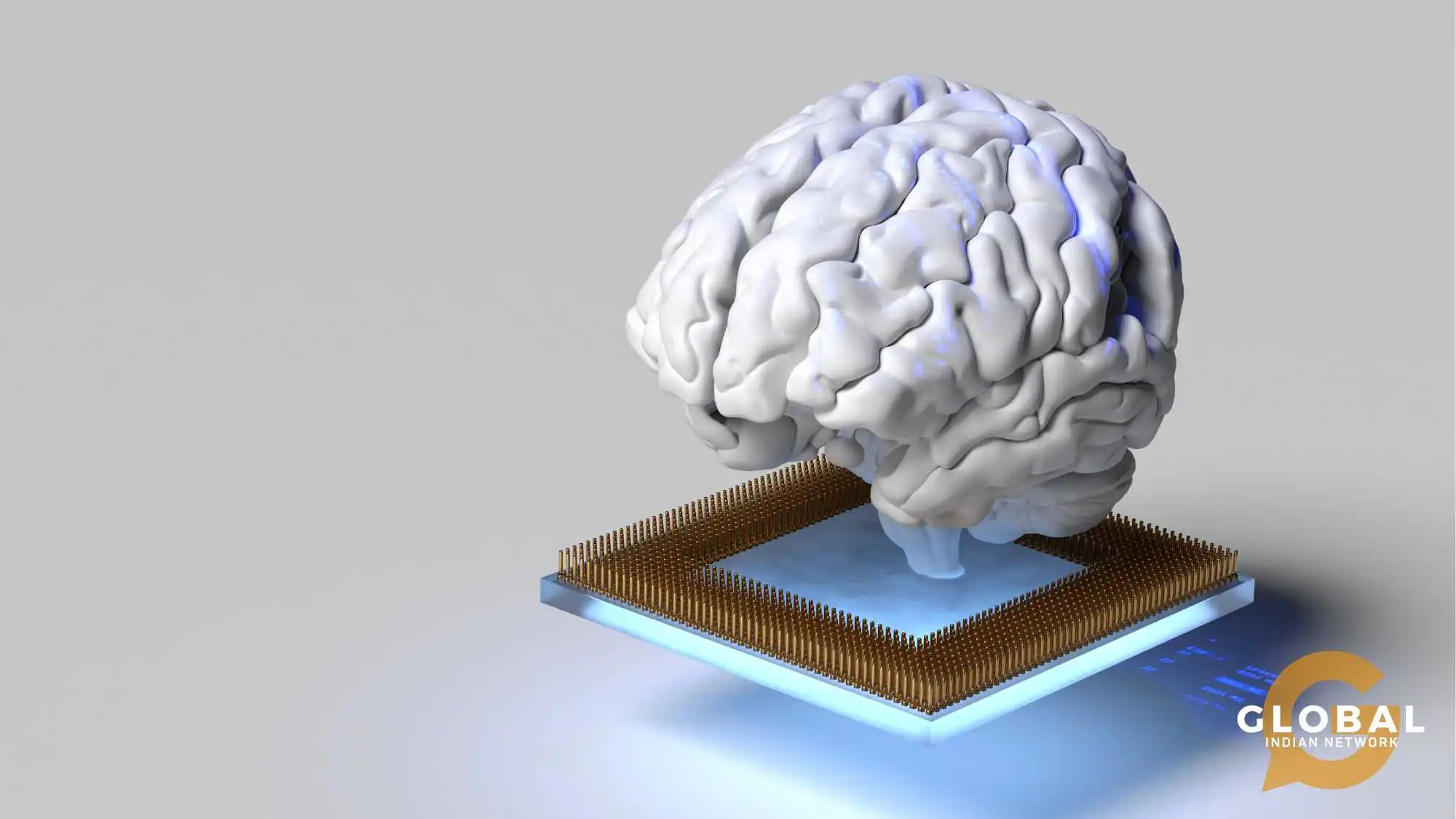In recent years, the term 'Artificial Intelligence' (AI) has gained the ring and quality of a catchphrase, making its way into almost every arena of human life. Its growing presence has been met with excitement, along with anxiety about its potential to replace human capabilities and vocations. Yet fewer people are aware of AI's less popular subset, augmented intelligence, which plays a significant part in our daily experiences of technology, just as its counterpart. As varying discourses emerge in the modern scenario about the precarious relationship between AI and human agency, we must ask ourselves this question: artificial intelligence or augmented intelligence, which is more conducive to human progress and well-being?
Let us dive in and look deeper into the nuanced differences between Artificial and Augmented Intelligence, as well as their current place and function within digital technology.
Table of Contents
What is Augmented Intelligence?
The term 'augmented intelligence' is also synonymous with 'intelligence amplification' (IA) and traces its roots back to 1956 in William Ross Ashby's book Introduction to Cybernetics. Unlike the somewhat ominous connotations of the term 'artificial intelligence,' which suggests a potential replacement of human intelligence, 'intelligence amplification' carries a less foreboding tone.
Intelligence amplification marks the convergence of natural and artificial intelligence. It is a specific application of AI and machine learning dedicated to enhancing human cognitive abilities rather than supplanting them. Unlike traditional AI, augmented intelligence integrates human emotional and intellectual reasoning alongside machine capabilities.
Its primary goal is to bolster human decision-making processes and, thereby, facilitate more informed actions. It operates in tandem with humans, serving as a supportive tool for everyday business operations, including:
- Accomplishing tasks
- Fostering creativity
- Problem-solving
Augmented intelligence facilitates human action by processing data and presenting it in a user-friendly format. Typically, this process involves using machine learning techniques to analyse vast datasets and offer insights that guide human decision-making. This technology takes into account the significance of human judgment, creativity, and critical thinking in decision-making processes.

How does Augmented Intelligence Work?
In contrast to the conventional view of AI as an autonomous and self-sufficient system operating independently of human input, Augmented Intelligence harnesses machine learning and deep learning capabilities, both relying on Limited memory algorithms to furnish humans with actionable insights derived from data.
Machine learning capabilities enable an AI system to learn and refine its performance through experience rather than additional programming. A prime example is natural language processing, which enables computers to recognise human language.
Deep learning, also known as deep neural learning, mirrors the brain's adeptness in processing data and recognising patterns. It has greatly aided data scientists who daily grapple with extensive datasets.
Applications of Augmented Intelligence
Augmented intelligence has been integrated into our lives for years, with examples like the abacus and calculators showcasing early forms of assistance in data processing and decision-making. In various industries, particularly in fields like data science and analytics, it serves as a potent tool for bolstering human capabilities and improving existing tools.
Augmented intelligence, coupled with deep learning, finds applications across industries that rely on big data analysis for pattern recognition and predictive insights. Examples include:
- Online stores using predictive analytics to forecast customer preferences
- Political think tanks employing big data analytics to identify undecided voters
- Medical procedures and case analyses to determine effective treatment options
- Factory automation supervised by human workers
- Virtual assistants and customer service products using natural language processing
- Mobile video games using environmental data to incorporate augmented reality elements
- Virtual tutoring for distance education
- Autopilot systems in aeroplanes and drones (used only during routine flight tasks; inapplicable on takeoff, landing, and unexpected events)
- Autonomous vehicles, like those of Tesla, sense environmental data to navigate without hazards
- Investment and financial firms monitor stock market trends to predict business outcomes
- Predictive maintenance of factory equipment based on historical data
The benefits of augmented intelligence applications are profound. Augmented intelligence systems enhance human decision-making capabilities by managing vast datasets and mitigating factors like bias, fatigue, and distraction. When human intelligence and augmented intelligence are combined effectively, the results surpass individual capabilities. For instance, in a clinical study, a collaboration between an AI system and human pathologists significantly reduced error rates in detecting lymph node cancer cells.
How Does Artificial Intelligence Work?
Artificial Intelligence (AI), or machine intelligence, is commonly perceived as any system using machine learning technology to replicate or enhance human intelligence. However, this isn't entirely accurate. AI, or 'intelligent machines', so to say, refers to algorithms capable of making smart decisions, but they don't "think" as humans do.
AI systems make decisions based on current input from data and sensors but lack the memory to learn from past experiences. They rely on predefined criteria set by programmers to respond to specific situations. For instance, reactive machines like IBM Deep Blue, a chess-playing supercomputer, rely on external stimuli to act.
AI is built to perform autonomously, with minimal human involvement. This enables the automation of mundane and repetitive tasks like data entry and document processing while streamlining workflows, reducing manual efforts, and enhancing overall efficiency, accuracy and consistency.
Despite its AI's exceptional capabilities, its autonomy must be understood as only partial. The idea of AI as a self-aware entity with an understanding of human consciousness, known as the "theory of mind," is far from becoming a reality with current technology.
Artificial Intelligence or Augmented Intelligence?: Differences and Comparison
The main difference between AI and intelligence amplification is that of autonomy. AI works independently to handle specific tasks, like email spam filters or plagiarism checkers, without needing human help. In contrast, augmented intelligence does not make its own decisions; it analyses data, finds patterns, and then presents this information to humans to make the final call.
For example, streaming platforms like Netflix use AI to suggest shows based on what users have watched before, but it's still up to users to decide whether they want to watch those shows.
Another key difference between the two lies in their approach to social interaction and decision-making. While both exhibit intelligent behaviour, augmented intelligence is more geared towards collaboration and possesses the unique trait of social intelligence, which enables it to understand human intentions and tasks before performing actions. Unlike AI, which operates autonomously, intelligence amplification requires social intelligence to provide explanations to humans and accept input from them, akin to human-to-human interaction.
In essence, the difference between AI and intelligence amplification can be understood as follows:
Artificial Intelligence (AI):
- Learns from past data and observations
- Relies on computers and machine-based systems
- Processes and results are mainly machines-dependent
- Substitutive role: Expected to compete with human jobs in the future
- Offers faster task completion
Intelligence Augmentation (IA):
- Synthesises human and machine performance
- Acts as a tool for human performance rather than a substitute
- Combines human and machine capabilities
- Processes and results are partially dependent on machines.
- Assistive role: Expected to bring better opportunities for humans in the future
- Results in slower task completion due to human involvement

Conclusion
In today's rapidly evolving landscape, the question of 'artificial intelligence or augmented intelligence' highlights the manifold implications of technological innovation and the need to find a suitable middle ground between AI's autonomous drive and IA's collaborative ethos. While AI evokes a sense of awe with its autonomous prowess, it also harbours a looming threat of encroachment upon human roles. Conversely, IA is a powerful tool for collaborative synergy between humans and machines, offering an optimistic hope in the face of technology's encroachment. The two strands are part of the slow progress towards a truly technological age in which a symbiotic, rather than contesting, relationship between humans and machines can be achieved.
FAQs
What is the difference between AR and AI?
Augmented Reality (AR) adds digital content like images or information to the physical world in real-time, enhancing the user's perception of reality through devices like smartphones or smart glasses. It enriches the user's sensory experience by blending virtual elements with the real environment. On the other hand, Artificial Intelligence (AI) uses machine learning to perform tasks that typically need human intelligence, learning, problem-solving, and decision-making.
Is artificial intelligence AI or intelligence augmentation?
Artificial Intelligence (AI) refers to machines or systems capable of performing tasks typically requiring human intelligence, such as problem-solving or decision-making, often autonomously. On the other hand, Intelligence Augmentation (IA) focuses on enhancing human performance through collaboration with machines, leveraging their capabilities to improve decision-making and task performance rather than solely relying on automation.
Which is better than artificial intelligence?
Determining whether Intelligence Augmentation (IA) or Artificial Intelligence (AI) is better varies with the context and goals of the user. AI automates tasks and processes vast amounts of data independently with efficiency and speed. Conversely, IA allows for more agency in decision-making processes involving intelligence systems, resulting in a collaborative and controlled outcome. While AI is fit for straightforward, mathematical and mundane tasks like data entry, IA may be more suited to subjective processes like data analysis and customer service.











[…] blog delves into the transformative power of these technologies, exploring how artificial intelligence or data analytics can benefit and propel your business towards success in the modern […]
[…] implementing Artificial Intelligence (AI) in small and medium-sized enterprises (SMEs) within the Indian manufacturing sector, it's […]
[…] there is an innate ability that artificial intelligence lacks- the ability to be original. While mundane, monotonous tasks are relatively easy for AI tools […]
[…] Artificial Intelligence (AI) is revolutionising drug discovery in India, accelerating the development of life-changing medicines. Here are some successful examples: […]
[…] government be able to take action to prevent such cases? Will they be able to properly implement Artificial Intelligence for the better handling of the […]